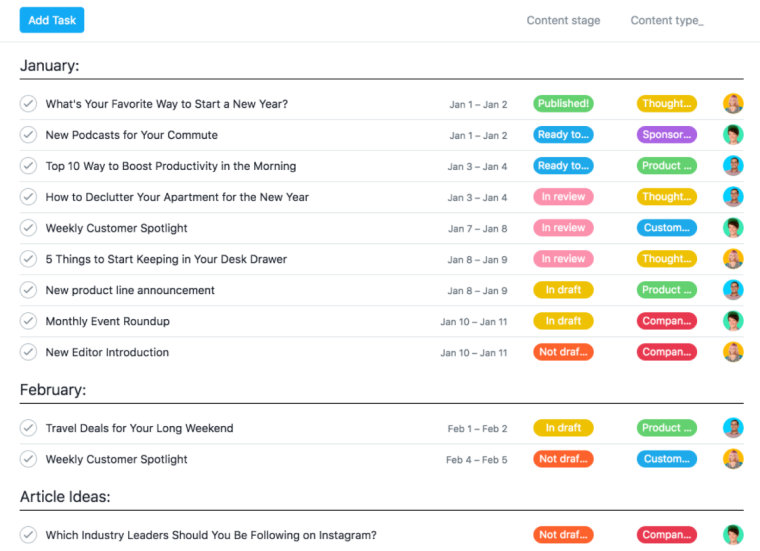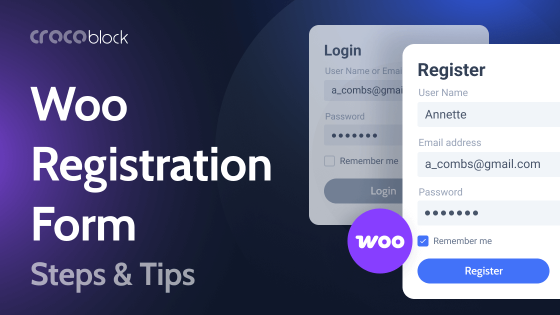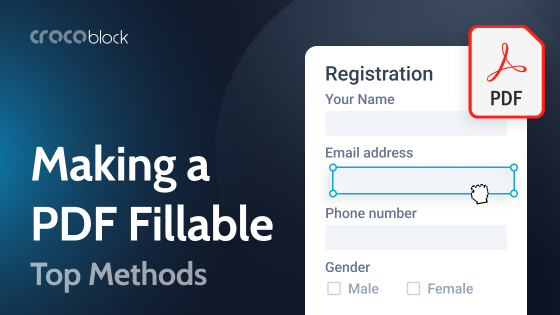It’s a no-brainer: 60% of marketers claim that creative and engaging content nurtures new customers. Most people reach out to you because they have already seen a Facebook post, a video on YouTube, Instagram reels, or a blog post. So, it’s content that drives and nurtures new customers.
Content creation is a process of generating information for publication in media. It is a complex process that has evolved exponentially in recent years, especially when it comes to digital media. Content creation includes many subprocesses, such as content planning, market research, ideation, creation, SEO optimization, editing, distribution, and analyzing the results. This article will dig deeper into building an epic content creation process and divide it into six simple steps.
So, let’s get straight into it.
📚Read also: How to find engaging topics?
Table of Contents
- Step 1: Define a Buyer Persona
- Step 2: Understand Where Your Target Audience Hangs Out
- Step 3: Set SMART Goals
- Step 4: Research & Identify Content Ideas
- Step 5: Content Editing and Proofreading
- Step 6: Design Editorial Calendar & Automate the Process
- Tools for Creating Epic Content
- FAQ
- Sum Up
Step 1: Define a Buyer Persona
If you create a detailed buyer persona, you are halfway to creating a successful content strategy. It will help you define your best buyer who wants to use your services. It enables you to personify and character and gives you a realistic approach to whom you will help.
When you create a buyer persona, you can define what your target audience looks like and what problems you will solve.
Below are the parameters that will help you define a buyer persona.
- Identify the demographics of your audience.
- Make a list of the best-selling products, and find out who buys them.
- Dig deeper into the social media trends in your specific niche.
- Gather testimonials from your clients.
Join forums to learn about the target customer.
Step 2: Understand Where Your Target Audience Hangs Out
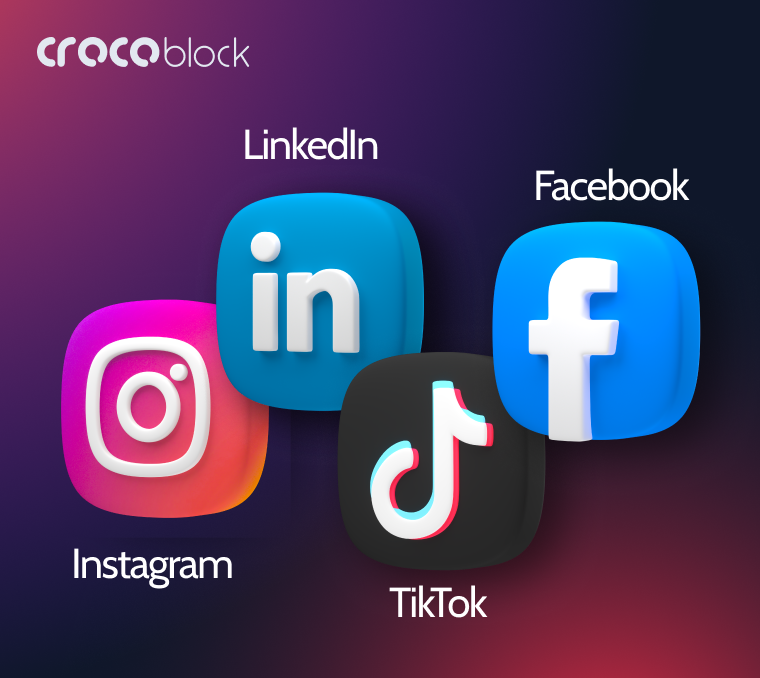
I’d say this is the most important thing to consider when you start creating content. If your target audience sticks to Instagram more often, you should focus on creating posts, reels, stories, live videos, and a carousel for Instagram.
Alternatively, if your target audience is professionals who hang out on LinkedIn, you should focus on creating content on LinkedIn. In this case, you must do in-depth research and develop the latest trends and technological aspects.
On the other hand, if your target audience is teenagers, who love to make TikTok videos, you will have to make creative, funfilled, engaging content on TikTok that reflects your passion and interests. From hairstyles, singing, lip-syncing, and makeup tips to dance challenges, teenagers love creative things and spend time on TikTok while engaging with similar content.
Knowing the social media habits of your target audience will give you a broader idea about how to create content. It’s good to hire a content manager who will help you audit and come up with the best possible ideas about the aspects like:
- What are the top platforms where your buyers spend most of their time?
- At what time during the day are they using social media?
- What content types are the most engaging?
Here’s an example.
Facebook posts get a higher reach at 11 am and between 1 and 2 pm. So, it makes sense to publish your posts during that time. Alternatively, research shows that the open rate of email is highest on Tuesdays at 1 pm, which means if you send your email at this time, chances are the high rate will be max. It’s that simple.
Learn about social media habits of the target audience
Remember that the target audience’s media habits alter from year to year, and what seemed like a perfect social media marketing strategy two years ago might not give you the expected results now. Experts say the total number of social media users will continue to grow in 2024 as more platforms become popular. For the companies, it is becoming wasteful to advertise everywhere (e.g., it’s pointless to advertise nursing homes on TikTok).
Another thing to consider when planning the social media content creation process is changing your brand’s tone of voice for the target audience on each platform. You may find out that a post with a subject relevant to your audience will be successful on one platform but gain surprisingly low attention on another.
Here are a few more social media content creation-specific tips:
- interact with your audience through comments and surveys;
- pay attention to social media metrics and specific tools for content audit (Facebook Insights, Twitter Analytics, etc.);
- when setting up a content calendar, follow the optimal posting frequency for each platform.
Step 3: Set SMART Goals
Once you define the buyer persona and identify where your target audience hangs out, it’s time to set SMART goals.
Specific, Measurable, Assignable, Realistic, Time-Bound.
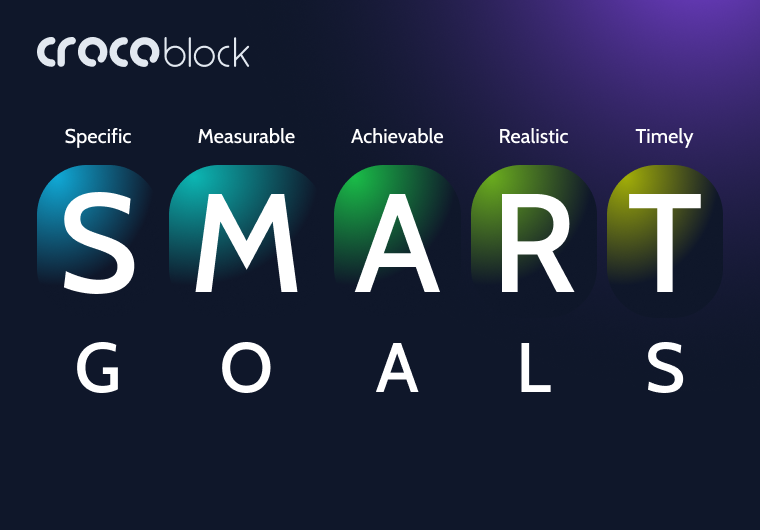
Marketers that set SMART goals are 376% more successful than others.
Set achievable goals over a certain period of time with the resources you already have. You can measure the results through statistics using tools like ClickFunnels, Google Analytics, Ahrefs, Mailchimp, Facebook Pages, etc. The tools will inform you how much traffic and conversions you get using the content plan and strategies you have.
Here are a few examples of SMART goals:
- Publishing weekly content helped to double traffic in the last six months.
- A Facebook campaign worth 50$ resulted in twice as many sales last week.
- Including infographics in the email campaign reduced the email unsubscribe rate by 10% in the last two months.
- Increased lead generation via landing page by 5% in the last three months.
Marketers that set SMART goals consistently achieve targets. Several KPIs can help you access and analyze your performance throughout your content campaign, including:
- YouTube subscribers;
- total number of Facebook followers over time;
- email subscribers;
- Instagram followers;
- the bounce rate of your blog;
- dwell time on your website;
- and much more.
These KPIs will help you determine the success rate of the SMART goals individually.
Step 4: Research & Identify Content Ideas
Have you heard of the E-A-T rating?
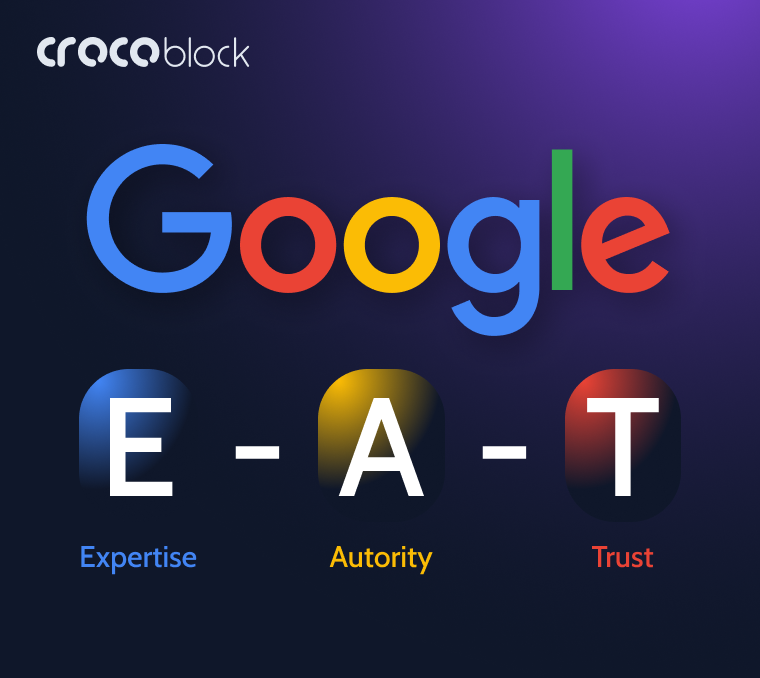
The term E-A-T stands for expertise, authority, and trust! Google always ranks those websites well, which it thinks are authoritative and have proven expertise in a specific industry.
Focus on creating content that helps solve real-world problems and is educational. You can also design a step-by-step guide using an ebook creator and publish it on your website.
While creating content regularly is good, creating content that addresses the user intent is excellent, and that’s when your website will have a higher E-A-T rating.
You have to be authoritative both in the eyes of the reader and the search engine. It’s great to start working backward. Start with the problem, and present a solution to the reader.
Once you know the problem, incorporate an SEO-driven content strategy using tools like Ahrefs or Semrush, and here you can check more detail about Semrush. Look for highly searched, low-competitive keywords that are informational and educational. Analyze SERP to identify the problems your target audience face in more detail.
📚Read also: OnPage SEO Checklist to Boost Traffic on WordPress Website
Together, it will give your readers a genuine reason to land on your website, blog post, or landing page. Gather a list of keywords for at least two to three weeks to work on so that you don’t have to spend time working on content ideas every time.
Step 5: Content Editing and Proofreading
It is vital to check it for stylistic mistakes and proofread it. Content editing is a complex process of reviewing content for readability, clarity, and flow. It is that stage of the content creation process where you check if you can make it better and resonate with your audience. When editing your content, ask yourself:
- Does the text correctly reflect your brand voice?
- Who are your readers, and are you using the correct tone when communicating with them?
- Does your writing hold readers’ attention?
- Is your writing factually accurate?
If you bear these questions in mind while writing, you will spend less time editing afterward and produce more consistent and professional material. The editing process may include changes to grammar, content structure, the content itself, and word reduction.
Proofreading refers to a surface-level process of finding and correcting grammar, punctuation, spelling errors, and inconsistencies (numerical and textual). Publishing content with mistakes, even if they are accidental, can damage your readers’ experience and even provide a wrong impression about your brand or product.
Step 6: Design Editorial Calendar & Automate the Process
While most people believe that content creation is all about researching, writing, and distributing content, professional content marketers know that having a yearly editorial calendar will help you achieve this goal seamlessly.
Having an editorial calendar helps you stay consistent with the overall content campaigns without being pushy via social media, website, press releases, newsletters, etc.
It improves brand awareness over a period of one year and takes into account ongoing trends, seasonal influences, and updates. One of the most important things to keep in mind is that you should not overload your followers or audience; otherwise, they will end up unsubscribing from your email list, unfollowing on social media, and avoiding your brand altogether.
Creating content and repurposing it is easy. However, creating content regularly from scratch is overwhelming for businesses and startups on a tight budget. A better way is to automate the process. You can hire a content marketer for a month and ask them to schedule content using Mailchimp, Hootsuite, Hubspot, Asana, Trello, etc., and other tools for weeks ahead. It will help you save time and money.
Tools for Creating Epic Content
Good ideas for blogs, press releases, videos, or any other content is essential for retaining your audience and increasing conversion rates. Defining your buyer persona and understanding where your core audience hangs out helps you create killer content by introducing you to general consumers’ behavior. However, even experienced writers may lack inspiration for new topics, leaving alone the newbies.
Tools for topic ideation
Coming up with unique ideas shouldn’t be complicated and time-consuming. With the right tools, you can find inspiration for new topics and verify the strength of the topics that you already have in mind.
Google Trends is a free tool for finding out what’s trending on the web. The data on Google Trends is based on real search queries and is presented as popularity-time graphs. You can browse daily trends, and search by time, country, region, and city. Comparing two or more keywords helps get more accurate data and determine what geographic locations are best for promotional campaigns.
Google Trends has a fantastic feature called Related Topics that allows following up on topics that are trending upwards. With this tool, you can identify a shift in audience taste and find ideas for generating popular content.
Ahrefs is another content marketing tool. With its help, users can determine how hard it would be for a given keyword to rank high in search engines. It clearly explains why it is better to use keywords with low search volume that are highly related to your audience than more general terms.

In addition to keyword generator features, Ahrefs can audit your site for SEO effectiveness and explore your competitors.
SparkToro is a website that gives valuable insights into your audience’s behavior on the web. It is self-determined as a tool to “instantly discover what your audience reads, watches, listens to, and follows.” Using simple questions and answers, you can find out details about the targeted groups and tune into your content creation process accordingly.
What sets this website apart from most other tools is that it isn’t only based on search queries. SparkToro scans millions of social media and web profiles to gather info about the media habits of the target audience.
AI content generator tools
Artificial intelligence tools are becoming the hottest trend in content writing and copywriting in general. Although Google considers automatically generated texts spam, AI tools, used with human creativity, can sufficiently help create high-quality content with less effort. They are especially helpful for professionals who want to write more material.
There are a few aspects in which AI content generators can assist every writer:
- providing copywriting formulas such as AIDA and PAS;
- optimizing content for SEO engines;
- producing templates for writing blogs, articles, letters, tutorials, etc.
If you’re using WordPress as your content management system for blogging, as most popular bloggers do, you can benefit from many AI-driven WordPress plugins and boost your performance. These tools can provide you with SEO-related insights about your content without leaving the WordPress interface (RankMath), automated link suggestions to lead readers to related posts and increase sites’ page views (Link Whisper), and AI-generated ideas for your content (GetGenie).
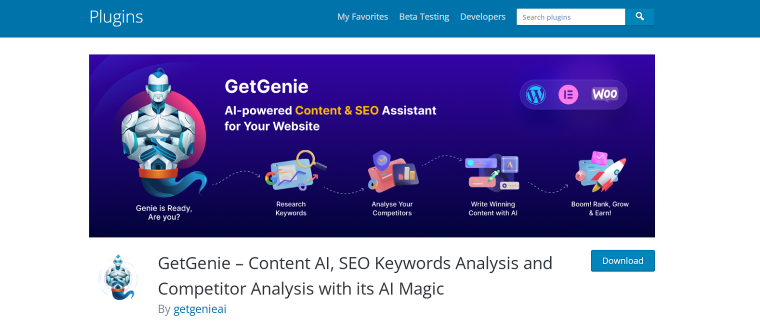
Don’t be scared of experimenting with AI for content creation purposes, but remember to edit everything and check whether the texts feel right. For now, computers cannot wholly substitute human creativity.
Proofreading tools
Accurate and well-written content is essential for positive UX and successful SEO efforts. While many online companies have talented editors who can catch most mistakes before publishing, it is important that the writers managed to boost the quality of their writings themselves.
Either way, there are many proofreading tools on the web to ease the editor’s job. The best software is Grammarly.
Grammarly is the most complete proofreading tool that offers many of its features for free. It checks your grammar, spelling, punctuation, style consistency, and more in real time. Importantly, it works on a variety of platforms, including Microsoft Word, WordPress, and Facebook, and, as of recently, it integrates with Google Docs.
Aside from checking your content for mistakes, Grammarly allows you to refine the text’s readability depending on your target audience, selected tone, and domain of your topic. Another cool feature is providing clear explanations regarding suggested corrections.
FAQ
A target audience is a specific group of consumers or readers who should see your product/publication.
SMART goals are goal-focused techniques used to set smaller achievable goals aligned with the company’s long-term marketing plans.
Google Trends is the best instrument for identifying trending topics, and Ahrefs is the most popular keyword generator for determining which keywords have the highest chances of boosting your content’s SEO effectiveness.
These two terms refer to the near-final stages of the content-creation process. Editing is a complex process of reviewing text for readability and clarity, while proofreading is a final check on the content, looking for misspellings, incorrect punctuation, and inconsistencies.
To Sum Up
Consistency is key to a successful content campaign. It helps you improve your brand awareness and visibility across all marketing platforms.
Content creation doesn’t have to be complicated. If you set SMART goals and follow these steps:
- Define a buyer persona.
- Understand where your target audience hangs out.
- Research & identify content ideas.
- Content editing and proofreading.
- Design editorial calendar and automate the process.
You will achieve year-long goals for your business.
